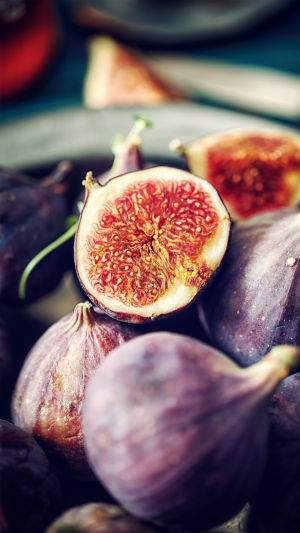Sometimes referred to as nature's candy, figs are unique fruits that have been enjoyed for their sweet, luscious flavor throughout human history. Botanically classified as Ficus carica, fig trees belong to the Mulberry family and are native to the Middle East and western parts of Asia.
These teardrop-shaped fruits have been cultivated since ancient times and are revered not just for their delightful taste but also for their nutritional benefits. Figs are rich in minerals like potassium, calcium, and magnesium, and vitamins, particularly A, E, and K, and they also contain fiber and powerful antioxidants.
<h3>How to Store Figs</h3>
Before delving into the secrets of figs, it is essential to understand their proper storage in order to preserve their delicate flavor and texture. Fresh figs are quite perishable and should be consumed shortly after purchase. To extend their shelf life, refrigerate them in a shallow bowl or on a paper towel-lined plate, and keep them away from strong odors since they can easily absorb smells. Figs can be stored in the refrigerator for about a week.
If one desires to keep them longer, they can be dried or frozen. Drying figs concentrates their sugars, making them even sweeter, and they can be stored in a cool, dry place for several months. For freezing, wash the figs thoroughly, dry them completely, cut them in half, and then freeze them flat on a baking sheet before transferring them to an airtight container. They can be frozen for up to six months.
<h3>Three Secrets About Figs </h3>
<b>1. The Fig's Unique Development and Pollination Process:</b>
One of the most intriguing secrets about figs is their unusual pollination story. Unlike most fruits that flower externally, figs are actually inverted flowers; their blossoms bloom inside the pod, which later matures into the fruit we eat. This process is made even more remarkable by the fig wasp, a tiny insect that plays a crucial role in pollination. The female wasp enters the fig through a tiny opening, losing its wings and antennae in the effort to lay her eggs inside the fig's flowers. In the process, she pollinates the flowers. Some fig species are self-pollinating, but the mutualistic relationship between the fig and the fig wasp is fascinating and necessary for those species that require pollination.
<b>2. The Varied and Uncommon Uses of Figs:</b>
Beyond being a delicious addition to the diet, figs have some unusual uses that may come as a surprise. Historically, figs were used not only as a sweetener before the widespread use of refined sugars but also for their medicinal properties. They have been used to treat a variety of ailments, from digestive issues to respiratory problems. The leaves of the fig tree have been shown to lower levels of triglycerides and may have an anti-diabetic effect. In some cultures, fig leaves are even used for culinary purposes, such as wrapping foods before cooking to impart a unique flavor.
<b>3. The Protective Properties of Figs:</b>
Figs are also known for their protective qualities, both in terms of health and cultural history. They contain high levels of antioxidants, which combat free radicals and may contribute to reduced incidences of certain diseases, such as heart disease and cancer. Alongside their health benefits, figs have also held significant cultural importance. In ancient times, they were considered so valuable that laws were created to protect the fruit trees from premature harvest. The fig tree also stands as a symbol of abundance, fertility, and sweetness in various cultures and religions around the world.
Figs are a fruit steeped in history, mystique, and utility. From their specialized pollination process to their diverse uses and protective properties, figs prove to be much more than a sweet treat.





